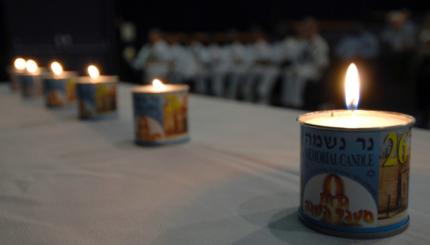On any given day, if I spend five minutes scrolling through Facebook I’m likely to see 20 posts bringing attention to some tragedy, big or small. Usually, as ashamed as I am to admit it, I keep on scrolling. Yesterday was different. There was a picture of my seminary, Hebrew Union College-Jewish Institute of Religion (HUC) defaced with a swastika.
It was far from the worst thing that happened in the world, yet that image shocked me. That’s why I can understand why so many reacted so viscerally: citing it as evidence of a changing America or even comparing it to the years preceding the Holocaust.
But after a little more thinking, it occurred to me: In a country of over 300 million people, there will always be individuals who hold beliefs we find abhorrent. Many of these people have access to spray paint, along with weapons far more dangerous. We can hate the fact that such people exist. We can also prepare our institutions to protect our property and our people. But we shouldn’t worry too much about these attacks.
What we should worry about is how our larger communities respond to them.
Let’s use what happened in Cincinnati as an example.
Within hours of the incident, local media reported it vigorously. When Rabbi Ken Kanter, associate dean of the campus, talked about the significance of the vandalism, he was surrounded by microphones. By the afternoon, the mayor of Cincinnati issued a statement saying “This act of hate perpetrated against our brothers and sisters at Hebrew Union College is an attack on our entire community.” And finally, hundreds of Internet commentators shared their thoughts. Many were like Betty Plame who wrote “The response needs to be swift and strong. No anti-semitic action is ‘minor.’ Do not dismiss nor normalize it.”
Reichspogromnacht, often referred to as Kristallnacht, was a turning point in the run-up to the Holocaust. Thousands participated in defacing and destroying Jewish businesses and institutions. But it wasn’t the extent of the damage that made Kristallnacht so devastating. It was the fact that, once it was over, no one condemned it.
It’s right to be shocked by the vandalism at HUC – I still am. But for those scanning social media posts and seeing evidence of the next Holocaust instead of evidence of hopes, you’re looking in the wrong place. Look to the statements of local leadership. Look at the posts on social media, sharing the story and calling it out– posts not only from Jewish people, but also from people of all backgrounds. Reading those, I’m feeling better about our country than I was before the swastika was even discovered. My faith in our neighbors is stronger than ever.
Jewish food, holidays, Torah, Shabbat, history, blogs and more in your inbox – sign up now!



